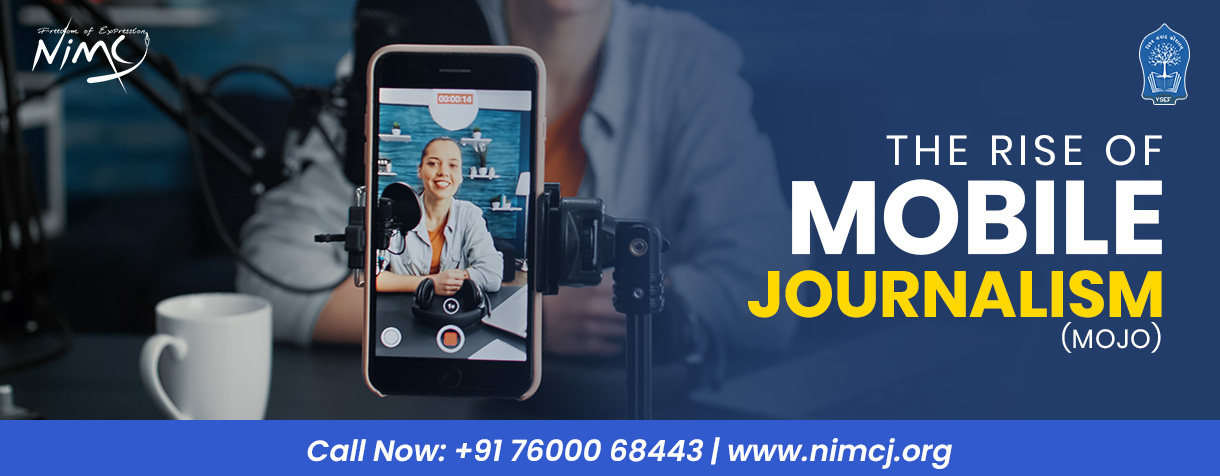
Gone are the days when journalism relied solely on bulky cameras, heavy microphones, and a full-fledged crew. Today, a simple smartphone in your pocket can become a newsroom. This powerful shift is known as Mobile Journalism (MoJo), and it has completely transformed the way stories are captured, produced, and shared.
From covering breaking news on the streets of Delhi to documenting cultural events in rural Kerala, MoJo has made journalism faster, more affordable, and more accessible than ever before. For young aspirants in India, this is not just a trend—it’s a career-defining opportunity.
Mobile Journalism, popularly known as MoJo, is the practice of using mobile devices such as smartphones and tablets to record, edit, and publish news content. Journalists can capture high-definition videos, edit them with apps, and instantly upload them to social media platforms or digital news portals.
In simpler terms, MoJo turns every smartphone into a mini media studio.
India is experiencing a MoJo revolution, and here’s why:
1. Smartphone Penetration
India has more than 750 million smartphone users. With affordable internet (thanks to Jio and others), digital news consumption has skyrocketed.
2. Social Media as News Platforms
Instagram, X (Twitter), YouTube, and WhatsApp are no longer just entertainment hubs—they’re primary news sources for millions of Indians. Journalists must adapt to these platforms, and MoJo makes it possible.
3. Rural Voices and Citizen Journalism
MoJo empowers people from rural and tribal regions to tell their own stories. Initiatives like CGNet Swara allow villagers to report issues via mobile phones, giving a voice to communities often ignored by mainstream media.
4. Cost and Accessibility for Young Journalists
For students and freelancers, investing in heavy camera gear isn’t feasible. A smartphone plus editing apps like Kinemaster, InShot, or Adobe Rush is all it takes to start reporting.
5. Flexibility for Newsrooms
News organisations such as NDTV, BBC India, and The Quint have started integrating MoJo in their workflows for faster reporting and wider reach.
1. Speed and Efficiency
Breaking news spreads faster when recorded and uploaded directly from a phone.
2. Cost Savings
No need to buy expensive cameras, mics, or editing suites.
3. Democratization of Journalism
Anyone with skills and a smartphone can become a journalist, breaking the monopoly of traditional media.
4. Multi-Platform Publishing
One story can be simultaneously shared on YouTube, Instagram Reels, X, and digital news websites.
5. Creative Storytelling
Smartphones enable innovative formats—vertical videos, live updates, interactive reels—that connect better with today’s audiences.
While MoJo has enormous potential, it’s not without hurdles:
Essential Tools
Skills to Master
At National Institute of Mass Communication & Journalism (NIMCJ), Ahmedabad, students are trained not just in traditional reporting but also in digital-first storytelling. With dedicated focus on:
This makes NIMCJ one of the best mass communication colleges in India to learn how modern journalism works in real-world scenarios.
The future of journalism is mobile-first, video-driven, and hyperlocal. With the rise of 5G, AI-powered editing tools, and AR/VR integration, MoJo will only grow bigger.
In India, where diverse voices need to be heard, MoJo can:
Mobile Journalism is not just a trend - it’s a movement redefining how we consume and produce news. For students, aspiring reporters, and even established journalists, mastering MoJo is no longer optional - it’s essential.
At NIMCJ, Ahmedabad, we believe MoJo is the future of journalism education. By embracing smartphones as storytelling tools, our students are prepared to become the next generation of storytellers who are fast, ethical, and innovative.
22 Aug 2025
Post by : NIMCJ